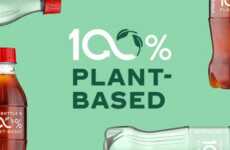Scientists Sequester Carbon Dioxide to Create BPA-Free Plastic
Katie Cordrey — June 13, 2010 — Eco
References: environmentalhealthnews.org & greenbiz
Scientists at the Institute of Bioengineering and Nanotechnology in Singapore have developed a way to capture CO2 from the atmosphere and use it to make chemicals that can be turned into BPA-free plastic. The new materials may be comprised of as much as 40 percent CO2.
Taking a cue from natural photosynthesis, researchers use organic chemicals, called ionic liquids to pull CO2 from the air and use it. BPA-free plastic is just one way that the CO2 may be sequestered in new materials.
Taking a cue from natural photosynthesis, researchers use organic chemicals, called ionic liquids to pull CO2 from the air and use it. BPA-free plastic is just one way that the CO2 may be sequestered in new materials.
Trend Themes
1. Co2-based Materials - Opportunity to create sustainable and eco-friendly products with reduced carbon footprint and new properties using captured CO2.
2. Carbon Capture - Innovative technology to capture CO2 from the atmosphere can be used in various applications to reduce emissions and ecological impact.
3. Green Chemistry - Adopting sustainable practices and eco-friendly manufacturing can lead to the creation of new materials and reduced environmental impact.
Industry Implications
1. Plastics Manufacturing - Using captured CO2 to create BPA-free plastic can revolutionize the plastics industry and offer a sustainable and eco-friendly alternative to traditional plastics.
2. Materials Science - CO2-based materials offer new possibilities and functionalities for various industries, such as construction, automotive, and electronics, in addition to reducing their carbon footprint.
3. Carbon Utilization - Innovations in carbon utilization can potentially lead to the creation of a circular economy, in which waste becomes a valuable resource and emissions are reduced.
4.3
Score
Popularity
Activity
Freshness






















